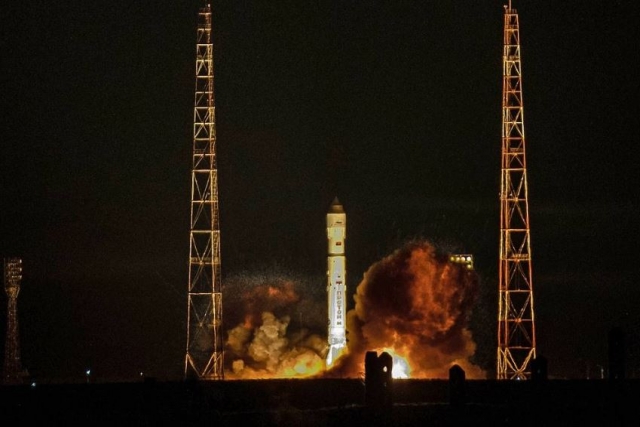Russia’s Proton-M Rocket Launches Telecoms Satellite for Angola

Russia’s Proton-M carrier rocket carrying Angola’s AngoSat-2 telecommunications satellite blasted off from Baikonur Cosmodrome in southern Kazakhstan on October 12.
Angosat-2 is a replacement for Angosat-1, which was the African country’s first satellite. It was launched on a Zenit rocket from the Baikonur in December 2017. Angosat-1 failed shortly after reaching orbit, and in April 2018, the two countries reached an agreement to manufacture and launch a replacement satellite. The replacement satellite is based on the Express-1000N platform and has been manufactured by Russia’s Reshetnev Information Satellite Systems. The construction of Angosat-2 did not add any new costs to Angola, which was in part due to Angosat-1’s insurance package, which consisted of a $300 million contract.
Proton-M rocket’s head unit comprising a DM-03 booster and the satellite was set to separate from the rocket’s upper stage in 584 seconds after the launch. It will take the booster several hours to deliver the satellite into the designated orbit.
The payload module that maintains communications in the C, Ku and Ka frequency bands was delivered by Europe’s Airbus Group. The satellite will operate at 23 degrees east longitude. The telecoms satellite is designed to operate for 15 years.
Angolan Minister of Telecommunications, Information Technology and Social Communication Mario Augusto da Silva Oliveira told reporters on October 11 that the satellite’s operation would begin 90 days after the launch when all technical and technological procedures were over.
Angola-2 will serve as a geostationary communications satellite, serving areas across Africa, and more specifically focusing on southern part of the continent. Massing in at roughly two tons, the payload is a high-throughput satellite (or HTS) that will provide 13 gigabytes of total bandwidth to areas on Earth that will be in range.













